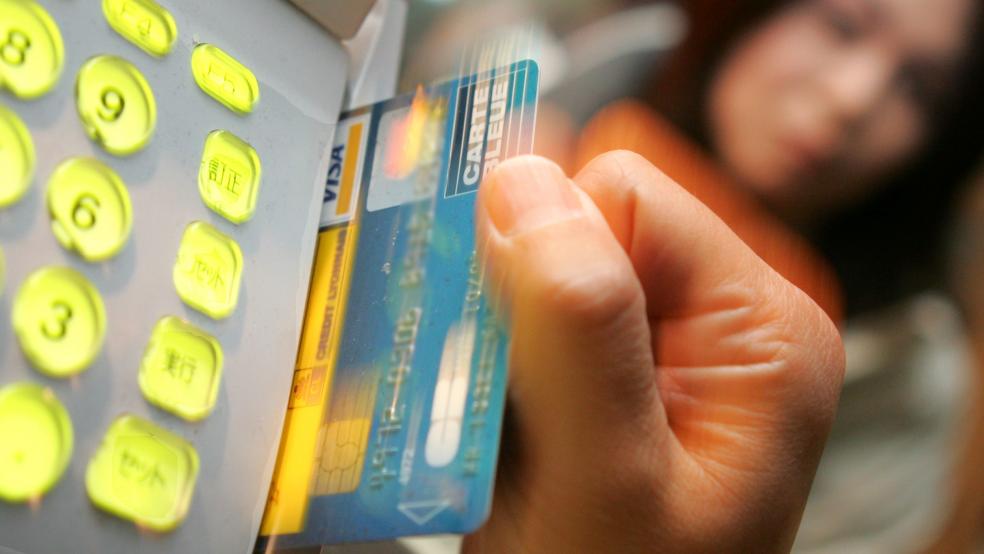With the back-to-school season fast approaching, many college students will be getting their first credit card. Yet with dozens of offers coming your way, it can be difficult to know what to sign up for and what to avoid.
Some first-time credit card applicants may benefit from cash-free purchases and from cash-back deals. The real benefit—if done right—is building a solid credit history for the long run if you pay your monthly credit card balance on time and in full, not just the minimum payments.
Related: 5 Reasons to Pay Off Your Credit Card Debt Now
Building a credit history is one of the main reasons college students should sign up for a credit card in college. It will help you be approved more easily when you buy a car or rent an apartment after you graduate.
“If they don’t have any credit card, they’ll pay more money or get declined,” said Julie Myhre, content manager at NextAdvisor.com, which provides independent research.
With the freedom of being at college and away from parents comes financial independence, at least on the spending side – which is why many students get in trouble by overspending once they have a core card account. “They think of it as a bottomless source of money,” Myhre said.
Some credit cards may lure you with incentives such as a 0 percent introductory rate for a few months, but such features might encourage you to carry a balance, which could cost you dearly once the introductory period expires and the rate shoots up to double digits. Instead, go for a card with fewer bells and whistles – and pay your full balance on time every month. If your payment is late, you’ll be charged a late fee and your account can be considered delinquent.
Here are five things to know if you’re a college student about to get your first credit card:
- Get to know the jargon. “It’s important to understand the different terms [of your account] and know exactly what you’re getting yourself into,” said Myhre. For example, you need to learn what a billing cycle is (the period between credit card billing statements); what a minimum payment entails (this is the smallest amount of your balance you can pay); what the annual percentage rate, or APR, means (the rate you’re charged to be able to carry balances).
- Understand what’s needed to qualify. College students typically have a low credit score, since you haven’t yet started building a credit history – and credit agencies can’t always gauge your ability to pay bills on time. So, if you’re under 21, you’ll have to provide proof of independent income or assets to show that you’ll be able to pay your monthly bill.
Otherwise, you’ll need a co-signer, or you can be added to your parents’ card to build your history – and there are pros and cons to both of these. For instance, if you’re added to your parents’ account, your folks will be able to see your purchases online – which may help ensure that you use the card appropriately. (Some experts advise having a spending arrangement upfront.) - Avoid credit cards with interest rates higher than 24 percent. Many student credit cards offer 0 percent annual percentage rates for a few months – but it’s easy to forget that once the introductory rate expires, the rate then hovers between 12 and 24 percent. “It’s relatively high, but remember it’s geared toward people with no credit history,” said Myhre. Again, the best way to avoid such a high rate is to always pay your account balance in full and on time.
- Find a credit card with no annual fee. “Most students are living on little to no money,” said Myhre. “A no-fee card will save them $100 or more a year.”
- Decide what type of reward is most important to you. Rewards can include cash back when you make purchases, or a 0 percent APR for an introductory period. But remember that there’s no such thing as a free lunch.
Related: 5 Easy Ways to Ruin a Perfect Credit Score
Examples of credit cards available to students include Citi Dividend Card for Students, which offers 0 percent APR for seven months, 5 percent cash back on rotating categories, including movie tickets and groceries, and 1 percent cash back on all other purchases. But be sure to note that the APR can go as high as 23.99 percent once the introductory period is over.
Journey Student Rewards from Capital One is designed to help students build good credit. This card has no APR and only 1 percent cash back on all purchases; but there’s a cash back bonus for paying bills on time, which is a good incentive for students focused on building their credit history. Either way, research these cards beforehand; go in with eyes wide open; and stay on top of your new credit card agreement so that you have no nasty (or credit-harming) surprises later.
Top Reads from The Fiscal Times:
- How You Might Qualify for Student Loan Forgiveness
- 4 Mid-Year Tax Tips That Could Save You Big Bucks
- The New Luxury for the Super Rich: Health-Centric Homes





